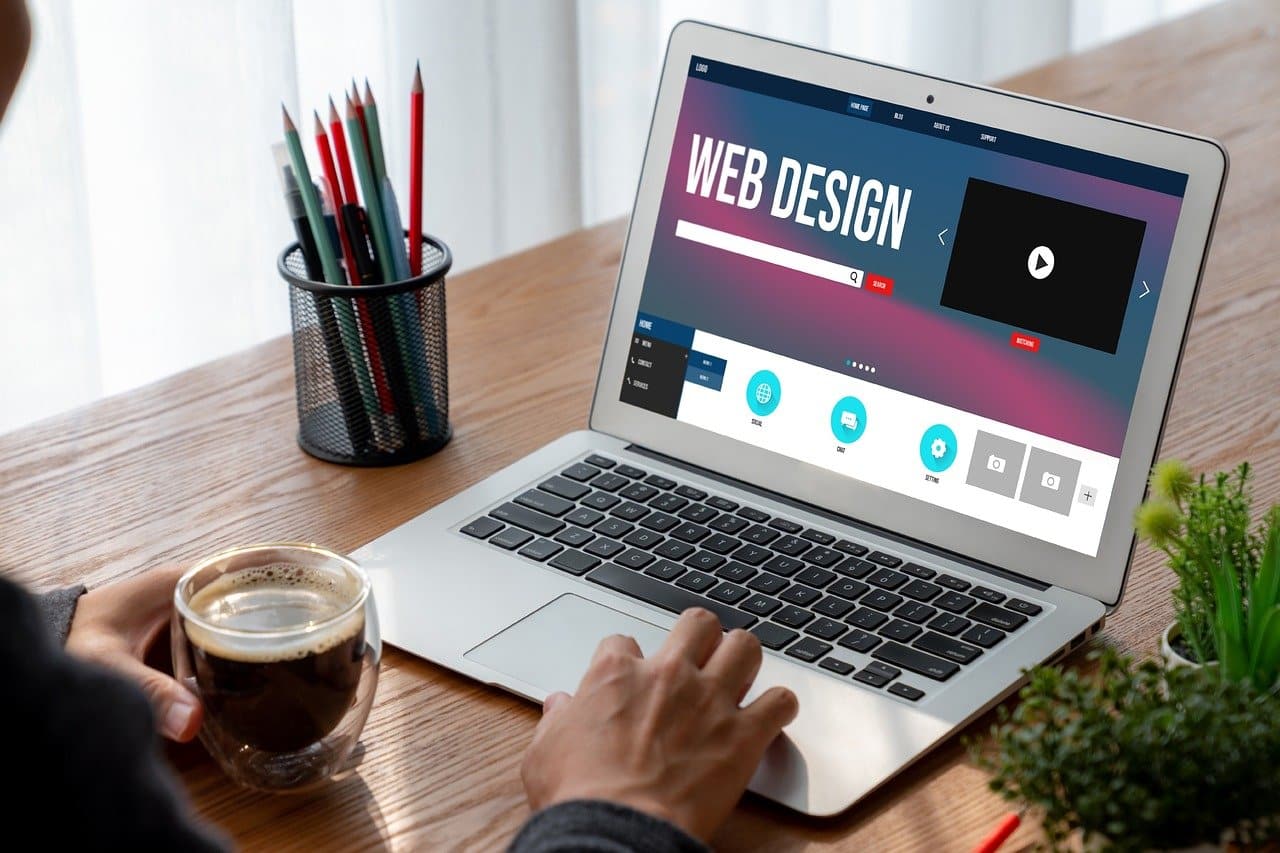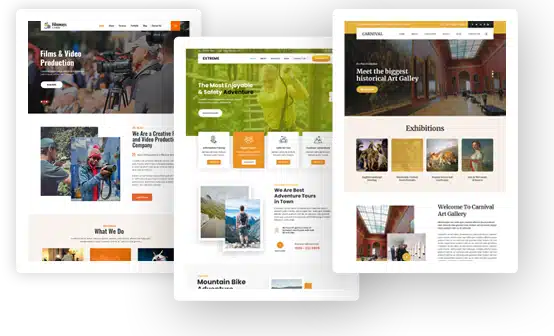Top UI/UX Design Examples Where Art Meets Functionality

Some product and interface design work reaches beyond pure utility to showcase creativity. Interfaces that are beautiful, emotionally resonant, and practical are produced by the best user interface and user experience designers because they combine art and function. Motion, color, typography, and layout are the elements that contribute to the intuitiveness, enjoyment, and indelible nature of these experiences.
Imagine a news app that seamlessly transitions between different sections, features striking editorial imagery, and scrolling in parallax. The visuals guide the eye, clarify the content hierarchy, and maintain a sense of spatial flow.
These examples answer the question “What are some examples of user interface and user experience design?” by showing that it involves coordinating structure, content, behavior, and pleasure as well as screen aesthetics. This concludes the investigation. The response to the inquiry you submitted is provided below.
10 User interface and user experience designs that are stunning and functional
These ten stunning user interface and user experience designs combine form and function. Though imperfect, they teach valuable lessons:
- Airbnb’s mobile onboarding is simplified by progressive disclosure, soft gradients, and illustrations.
- The gamified lessons that are provided by Duolingo make use of humorous animations in order to provide feedback without diverting your attention away from the task that you are currently working on.
- Through the utilization of graphics that are bold, motion that is seamless, and personalized insights, Spotify Wrapped is able to create an experience that is rich and narrative-driven.
- There is a hierarchy, white space, and an intuitive card swiping system utilized in the “For You” tab of Apple Music.
- Figma’s plugin library: clear filtering, micro-animations when items hover, and fast response times.
- Notion’s database interface: toggles between highly detailed and minimalist, depending on user needs, with consistent affordances.
- Slack’s onboarding bot & walkthroughs: conversational UI meets helpful cues and incremental disclosure.
- Medium’s article layout: typographic finesse, generous line length, and in-line comments that don’t distract from reading.
- Stripe’s dashboard defaults: clean charts, toggles, and micro-tooltips that clarify complex data without overwhelming.
- Headspace’s meditation flow: gentle color shifts, motion subtlety, and calm pacing that match user expectations.
Each of these stands as an answer to what is ui/ux design examples are, in real-world products, where users accomplish tasks effortlessly and appreciate the visual composition. The implementation of these ideas across web, mobile, and hybrid platforms is within the capabilities of a web design company in Houston, TX that has experience in user interface and user experience strategy, creative leadership, prototyping, and engineering.
Awesome UI/UX Designs That Are Clear and Creative
Compelling visuals and a clean, logical information architecture commonly spark new ideas. We examine several inspiring ui/ux design projects that combine creativity and clarity:
- Redesign concepts from design communities, for instance, reimagined banking apps using immersive onboarding scenes, or speculative VR travel booking flows that capture attention while preserving clarity.
- Interactive storytelling websites, for a film, book, or brand, where parallax, layering, and scroll-based animation carry a narrative, yet the calls to action remain obvious.
- Personal portfolios by visual designers, where bold visuals are matched with smooth navigation, letting visitors quickly reach case studies, contact forms, or blog posts without confusion.
These projects show that “creative” need not conflict with “usable.” Indeed, the best ui ux design examples reveal how artistic expression can enhance clarity, for example, by directing the eye to critical actions or by reinforcing the hierarchy of content with visual cues.
When Art Inspires Function: Brilliant UI/UX Design Examples
There is a special category of interface where art inspires function, designs so thoughtfully composed, they feel like digital sculpture, yet ultimately serve a practical end. In such cases, form and function don’t compete; they support each other.
Consider these brilliant ui/ux design examples:
- A museum or gallery site where scrolling reveals layers, textures, or “windows” into exhibits, yet the user never loses the path to ticketing, scheduling, or membership.
- A fashion or jewelry brand’s interface that echoes the materials of the product (e.g., metallic gradients, carved shapes) but still leads the user smoothly to “Buy” actions and product filters.
- A wellness or meditation app where abstract, hand-drawn animations breathe, shift, or dissolve, yet the main flow (session start, next, pause) remains clearly visible.
These are real answers to what is ui/ux design examples are, designs where aesthetics don’t just exist alongside functionality, but actively inform and enhance it.
Design Masterpieces: UI/UX Interfaces That Feel Like Art
A design masterpiece is an interface that feels like a curated gallery rather than a utility. These UI/UX interfaces encourage lingering, exploration, and emotional resonance while achieving their goals.
Examples include:
- Digital magazine layouts where every image, every margin, every hover effect feels purposeful.
- Music or podcast discovery apps that animate in ways reminiscent of visual art installations, yet maintain quick playback and search.
- Niche creative software or prototyping tools where even the error states and micro-interactions have been designed as cohesive visual statements.
These masterpieces are more than pretty; they’re functional, and hence, top-tier ui ux design examples worth dissecting.
Functional Elegance: UI/UX Designs That Redefine User Experience
“Functional elegance” describes interfaces that feel effortless, refined, and, even though powerful, transparent in their operation. As we covered in The Role of UI/UX Design, “creating a user experience through UI design is essential when building websites on the WordPress platform. It entails designing the interactive elements visitors interact with on a WordPress website.”
Achieving this is no small feat, and several case studies stand out:
- Productivity or project-management tools that collapse into minimal modes when not needed, then expand with context.
- Health and wellness trackers with poetic, readable curve animations.
- Dashboards for designers, analysts, and creators that are highly customizable but clear.
Ui/ux design examples show that elegance can improve utility, not reduce it.
The Perfect Blend of Form and Function in Modern UI/UX Design
Modern product design blurs “form” and “function”. The best modern interfaces combine form and function to be expressive without sacrificing performance or clarity.
Some core principles behind these examples:
- Component-based, responsive systems that retain visual identity across screen sizes.
- Micro-interactions that are refined, provide clear feedback, and did not cause any disruptions (for example, loaders, hover motion, and toggle responses) are examples of such interactions.
- Color, typography, iconography, and movement are all examples of visual choices that can communicate the identity of a brand and influence the decisions that users make.
Creative examples of UI/UX that make things look good and work well
Creating bold visuals is different from creating a functional, user-friendly product. Below are creative ui/ux examples that make that translation successful:
- An art gallery’s membership site that layers hand-drawn sketches and textures, but still lets users reserve tours or buy tickets with a few taps.
- A startup’s landing page that uses 3D models you can rotate, zoom, or toggle, yet never sacrifices clarity of the main conversion paths.
- A niche mobile tool (say, a plant care or recipe app) where illustrations, seasonal motifs, and ambient animations enrich the experience, while the core flows (adding, viewing, editing) remain intuitive.
If you’re looking to execute such creative yet functional designs consistently, Design Shifu offers unlimited graphic design services on a subscription model. Their experienced designers help brands, startups, and agencies translate ideas into high-performing digital interfaces, marketing visuals, and product designs, combining usability with visual impact every time
How Designers Merge Artistry and Usability in UI/UX Design
Design challenges include how artists and usability engineers work together in UI/UX projects. Iteration, layered thinking, and thorough user research are the answers. Teams often use the following framework for new projects:
- Research & Empathy: Prior to sketching, we define user goals, pain points, and contexts. Style should serve these users, not vice versa.
- Wireframes & Skeletons: Create structural layouts that ignore styling. This ensures the flow and architecture don’t collapse when visuals are added.
- Moodboards & Visual Direction: Hues, textures, typography, and images need to be consistent with the brand and atmosphere. Choose directions that fit the wireframe gracefully.
- Making Mockups and Prototypes with High Resolution: Besides animation and small interactions, you should also add some visuals. Test to ensure no visual distractions hinder navigation or task completion.
- Usability Testing & Iteration: Watch real users interact with prototypes. Where confusion arises, strip back or rework until the design is both beautiful and understandable.
- Implementation Collaboration: Designers and developers partner early. Animations, performance constraints, and responsiveness are built in, so the final product is as elegant in code as it was in concept.
UI/UX Inspirations: Beautiful Designs That Actually Work
At the end of the day, inspiration comes from real products and design showcases. Tips for finding ui/ux inspiration and analyzing beautiful, functional designs:
- Filter Dribbble, Behance, and Awwwards by “interaction,” “mobile app,” and “website” to find projects with detailed case studies.
- Look for product teardowns and case studies that explain decision rationale, UX trade-offs, constraints, and alternatives.
- Open source UI kits and libraries: examine how professional systems implement typography, spacing, responsiveness, and theming.
- Competitive benchmarks: explore your industry’s leaders and challengers. How do they organize data, tell stories, and scaffold tasks?
When you look with discernment, you’ll see not just pretty screenshots, but the principles behind them. That’s the real value of ui ux design examples and what is ui/ux design examples are in practice.

